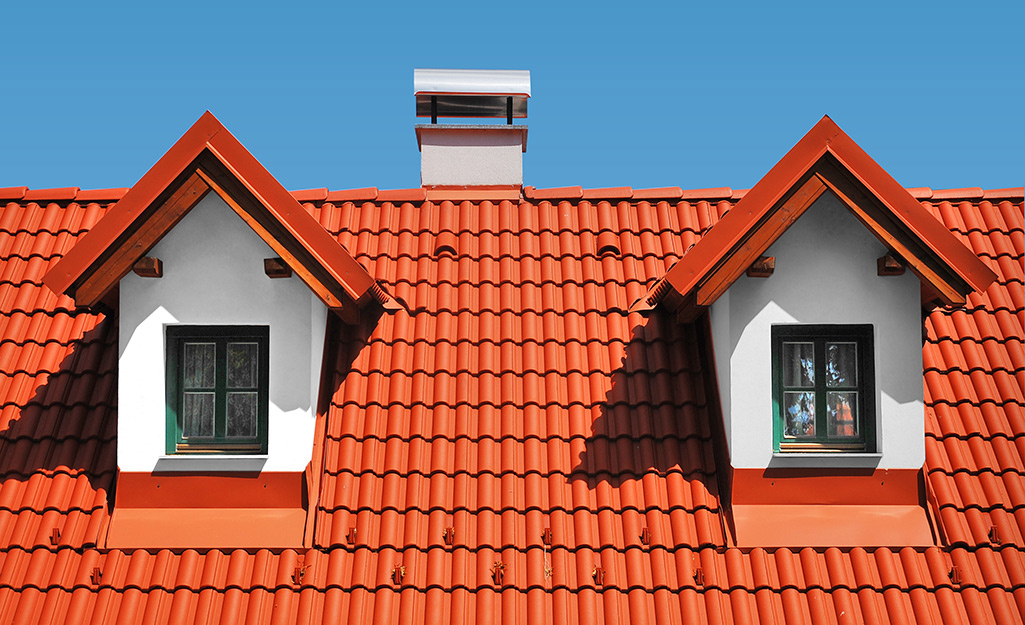Having a safe home is everyone’s dream, for that before building a house it is important to pay attention to what are the elements that ensure the most important comfort on the roofs and tile of the house. There are many types of roofs, and the ones most often used in Indonesia are concrete roofs and tiled roofs.

Here we will discuss, what type of roof should you use to protect your home. Let’s take a closer look.
Advantages and Disadvantages Concrete Roofs
To be able to find out in more detail about non-concrete roofs, in the following we explain some of the advantages and disadvantages of using non-concrete roofs.
Has Many Functions
If you use a non-concrete roof, of course it has many uses, such as being able to be used as a yard by placing flower pots, then as a clothesline, as a place to relax with family, and as a place to store other objects.
Very Sturdy and Not Easily Damaged
Roofs made of concrete are very sturdy and not easily damaged. Even though it is hit by strong winds and storms, even if the non-concrete roof of your house will remain strong and unshakable. Non-concrete roofs are resistant to various weather conditions, be it rain or heat. The use of non-concrete roofs can also minimize leaks, of course, with the right leak-proof coating paint. You should use a special coating paint for concrete roofs, namely Paint Pro which is definitely resistant to standing water, UV resistant and also a little smudge.
Very easy to sell
Make penjaannya spelled out very easy. You can stand directly on the concrete roof comfortably, so cleaning on the concrete roof is very easy and you are also easy in terms of painting and revising your non-concrete roof.
Disadvantages of Using Concrete Roofs
Apart from having advantages, using non-concrete roofs also has disadvantages that you need to know, including:
Working on a Concrete Roof is Very Complicated
When compared to other types of roofs, the construction of a non-concrete roof is certainly quite complicated. Making a non-concrete roof requires accuracy so that everything in the calculations and the results must be perfect. If the work is not perfect, this can lead to easy leaks in your non-concrete or porous concrete.
Prone to waterlogged
A roof that uses no concrete certainly has a more even position, unlike a sloping tile roof so that the water will flow by itself. On non-concrete roofs there are usually drains or gutters that are made to make the flow of water easier, especially when it rains. But you need to be aware of the problem of waterlogged concrete roofs, for example due to clogged drains due to garbage and so on. Make it prevent the puddles from leaking and seeping by using the right leak-proof coating paint. Use Aquaproof Pro paint which is definitely PRO resistant to puddles with the latest innovations of high performance polyurethane acrylates.
Prices are quite expensive
The last drawback in using non-concrete is that the cost is quite expensive. You need to prepare quite a lot of budget when using this type of roof. Compared to you using a roof made of tile, using a non-concrete roof is certainly much more expensive. Even though it’s expensive, it definitely matches the quality, the non-concrete roof is very sturdy and strong for years.
Advantages and Disadvantages of Tile Roofs
Each material or part of construction in a building also has advantages and disadvantages, as well as tiled roofs. For that, let’s follow some of the advantages and disadvantages of tile roofs.
Can be applied to all types of house buildings
The use of tiled roofs is generally suitable for all types of houses. Even if you only use a wooden frame house, you can still use a tiled roof.
Able to Protect Heat
Another advantage of a tiled roof is that it can protect your house from the hot sun, so that during the day you won’t feel too hot.
Easy Air Enter
Basically, tile roofing material has pores so that air will always be able to enter and will make your home room not feel stuffy and damp.
Disadvantages of Using Roof Tiles
Before you choose a tile as the roof of your house, of course you need to recognize the disadvantages of a tile roof.
Very Easily Damaged
Compared to using a non-concrete roof, using a roof with tile material is definitely vulnerable and easily damaged, tile roofs do not have certain weather resistance, such as strong winds which will cause the tiles to shift and scatter causing leaks to form. Tile roofs are also prone to cracking and damage, so you need to prepare tile backup.
Color Fades Easily
Not only are they very vulnerable and less strong, tile roofs are also easy to change in appearance, especially when they are often exposed to rain and it is also hot.
It is mandatory to break the roof tiles when reconstructing the building
Unlike a non-concrete roof, if you want to elevate a building construction or increase a room vertically in your house, then you have to break all of the tiled roofs.
Should You Choose a Concrete Roof or a Tile Roof?
With the explanation that has been stated above, now you know what is the difference between using a concrete roof and a tiled roof. In terms of quality, the use of non-concrete roofs is more recommended than the use of tiled roofs. If you have sufficient funds and want to prioritize safety and quality, you should use a concrete roof. If you are in a situation of little funds, you should use a tiled roof with the consideration that there will be no building reconstruction in the near future.

